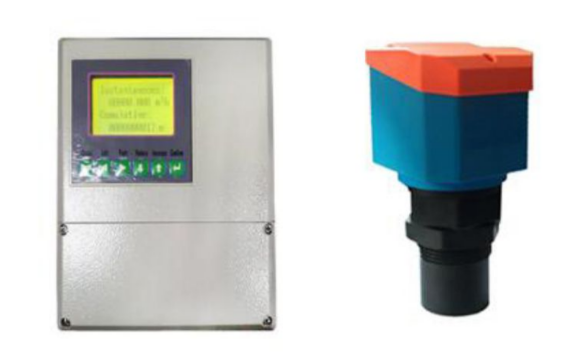How Does an Ultrasonic Flow Meter Work?
Open channel flow meters measure the level, flow rate, and total volume of water in weirs, flumes, channels, and partially filled pipes. These meters use a non-contact level sensor to detect water levels and apply Manning’s equation along with channel characteristics to calculate flow rate and volume. Area velocity flow sensors can be installed at the bottom of ditches, channels, or culverts. They use ultrasonic pulses to measure the depth and velocity of the water to be able to calculate the flow rate (flow). These systems are very easy to install due to simpler installation and can save money based on the time it takes to install the flume or weir. Another benefit is that once the sensor is installed, the flow data is recorded into a digital file for future review or water use decisions.
Ultrasonic flow meters measure the level in a channel by transmitting a pulse of sound from the face of the sensor to the surface of the flow stream and measuring the time for the echo to return. The transit time corresponds to the distance between the face of the sensor and the surface of the water.
During initial setup, the meter is calibrated to a predetermined reference point, either the zero level (no flow) or a specific level within the flume or weir. Once calibrated, the meter calculates the liquid level using simple arithmetic. This level is then used with pre-programmed discharge equations or strapping tables to determine the flow rate.
Ultrasonic sensors, being non-contact, require no scheduled maintenance. They are resistant to the effects of chemicals, grease, suspended solids, and silt in the flow stream.
Performance of ultrasonic flow meters may be degraded by:
- Strong wind
- Solar heating (of the sensor)
- Foam
- Turbulence
- Steam
- False echoes from obstructions
To combat these problems a variety of methods are used:
- Sensor sunshades (for solar heating)
- Angling the sensor face (to reduce steam condensate build up)
- Proprietary control schemes are used to adjust amplifier gain (to increase echo strength)
- Variable blanking distances (to eliminate early / late echo returns)
- Dampening factors (applied to reduce peaks and troughs in the output signal).
Ultrasonic flow meters perform best on channels at least 6 inches (15.24 cm) wide to avoid issues with beam spread. Their use is not recommended in environments with steam, foam, turbulence, or floating debris, oil, or grease, although some of these conditions can be mitigated.
For optimal accuracy, a temperature sensor—preferably integrated into the ultrasonic sensor or as a standalone unit—is necessary to compensate for air temperature fluctuations.
Under standard conditions (still air, 40–70% relative humidity, 72°F [22.22°C]), ultrasonic flow meters offer level measurement accuracy within ±1/4 to 3/8 inch (0.635 to 0.9525 cm), depending on the level change.
When mounting an ultrasonic sensor over a flume or weir, there is a balance between accessibility (mounting near the flume's side) and achieving maximum accuracy (mounting over the flume's centerline). If the flow is well-conditioned and the flume is correctly set, either option works. However, if the flow is turbulent or poorly distributed, sidewall readings may differ from centerline measurements. It’s important not to assume that centerline readings are automatically more accurate.


